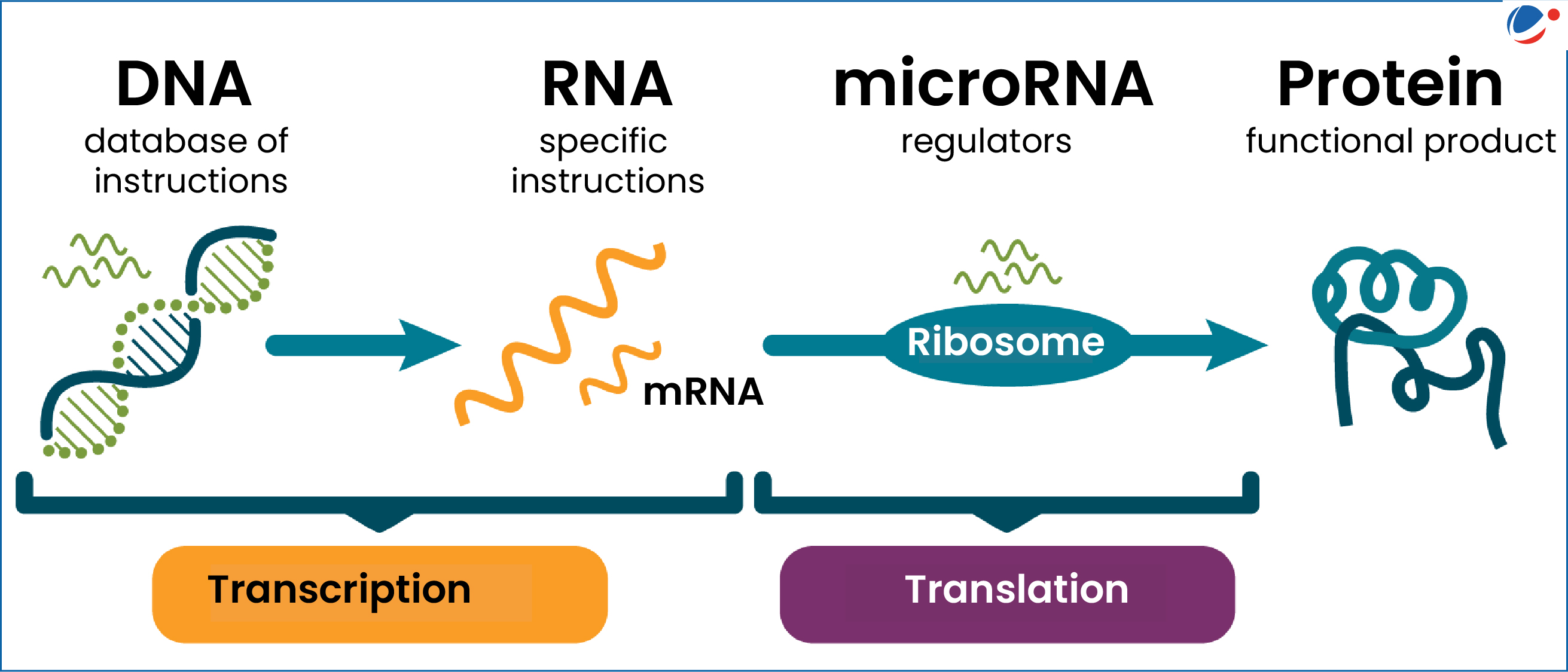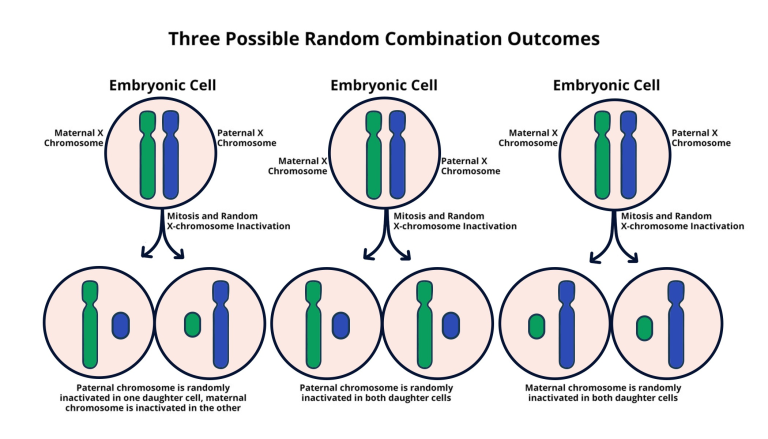MicroRNA discovery marked a groundbreaking moment in molecular biology, unveiling intricate layers of gene regulation that were previously unrecognized. Pioneers like Nobel laureate Gary Ruvkun, who along with Victor Ambros identified microRNAs in 1992, revolutionized our understanding of genetic control mechanisms in the C. elegans roundworm. Their trailblazing research, primarily funded by NIH grants, not only garnered attention over time but ultimately earned them the 2024 Nobel Prize in physiology or medicine. As interest swelled within the scientific community, therapies utilizing microRNAs started clinical trials for various diseases, including heart disease and cancer. Today, microRNAs are hailed as essential players in the development and functioning of organisms, underlining the profound impact of their discovery on modern medicine and genetic research.
The emergence of small non-coding RNAs has transformed the landscape of genetic regulation, providing a new perspective on how genes control biological processes. This innovative realm, spearheaded by researchers like Gary Ruvkun and Victor Ambros, has highlighted the role of these tiny molecules in organisms such as the nematode C. elegans. This foundational work not only illuminated the principles of gene expression but also paved the way for microRNA-based therapies aimed at addressing serious health issues like cancer and Alzheimer’s disease. As federal funding, particularly from the NIH, continues to support this line of inquiry, the capacity for groundbreaking advancements in the RNA field remains promising. The burgeoning interest in RNA science reflects an exciting convergence of biology and therapeutic innovation.
The Groundbreaking Discovery of microRNA by Gary Ruvkun
In 1992, Gary Ruvkun, alongside Victor Ambros, made a landmark discovery pertaining to microRNA during research on the C. elegans roundworm. This revelation unveiled a novel layer of gene regulation, which revolutionized our understanding of RNA’s role in genetic expression. Initially, the scientific community in evolutionary biology was skeptical about the significance of their findings beyond the realm of their specific model organism. The true impact of microRNA was not appreciated until years later, although it was clear that this tiny RNA was fundamental in regulating gene activity, which has profound implications in various species, including humans.
The subsequent publication of their findings in the journal Cell in 1993 did not garner immediate acclaim. Yet, as scientific curiosity grew, Ruvkun and Ambros’s work started receiving notable interest. The funding for this pioneering research primarily came from the National Institutes of Health (NIH), which helped sustain their projects over the years. This long-term support was crucial, demonstrating how federal investment can fuel groundbreaking discoveries that lead to significant advancements in medical science.
The Role of NIH Funding in Advancing Gene Regulation Research
NIH funding has played a pivotal role in the advancement of research concerning microRNAs and gene regulation. For over 40 years, Ruvkun has benefitted from federal grants, receiving around $150,000 annually to support his lab and its personnel. These funds not only promote scientific inquiry but also ensure that talented researchers can pursue their work without the financial constraints that often burden academic labs. The efficacy of such funding is evident in the transformative discoveries that have arisen from Ruvkun’s research, contributing to the burgeoning field of RNA and its therapeutic applications.
Despite the critical role of NIH funding, Ruvkun has expressed concern regarding ongoing discussions about budget cuts. He emphasizes that investments in scientific research yield substantial returns, fueling innovation and economic growth. The need to maintain funding levels is particularly pressing, as the future of young scientists hinges on the stability offered by continuing research grants. Ensuring that the next generation of researchers remains in the field is vital for sustaining advancements in gene regulation, which potentially leads to new therapies and medical breakthroughs.
Clinical Trials and the Potential of microRNA Therapies
The implications of microRNA discoveries go beyond basic science; they are making their way into clinical applications. Therapies targeting microRNAs are currently in clinical trials, providing hope for effective treatments for various diseases, including heart disease, cancer, Crohn’s Disease, and Alzheimer’s. The realization of microRNAs as therapeutic agents underscores the importance of foundational research that initially appeared niche. Ruvkun’s insights into microRNA functionality have positioned these small molecules at the forefront of modern medicine.
As microRNA therapies become more prevalent, the scientific community is beginning to fully appreciate their potential in gene therapy and regenerative medicine. These treatments aim not only to alleviate symptoms but also target the underlying genetic damages and regulatory failures in various diseases. Their development showcases how research in model organisms like C. elegans can translate into significant advances in human health, reflecting Ruvkun’s assertion that the field of gene regulation has broader implications than initially anticipated.
The Evolution of Research Interest in MicroRNA
The initial lack of recognition for the significance of microRNA gradually transformed into a fervent interest within the scientific community. As research findings accumulated, the scope of microRNA’s influence became clearer, leading to an increased number of conferences and collaborations. The evolution reflects a broader trend where foundational discoveries serve as springboards for interdisciplinary research, inspiring scientists from various fields to explore the regulatory mechanisms governed by these tiny RNA molecules.
Over the years, conferences that once attracted modest attendance have now grown exponentially. This shift illustrates how the understanding of microRNAs as key regulators of gene expression has drawn in a diverse audience of researchers, from botanists to human health experts. The community’s enthusiasm surrounding microRNA research has paved the way for collaborative efforts, enhancing the potential for groundbreaking applications in genetics and therapeutics, thus reincorporating Ruvkun’s pioneering work into the broader landscape of RNA studies.
The Global Impact of Ruvkun’s Research on RNA
Ruvkun’s research has not only laid the groundwork for understanding microRNA but also inspired a global movement in gene regulation studies. His findings sparked a chain reaction in the scientific community, which has since become increasingly aware of the essential roles tiny RNAs play in various biological processes. With an emphasis on international collaborations, researchers worldwide are building upon the initial discoveries made in C. elegans, exploring microRNA’s relevance across different species. The global adoption of these concepts illustrates the widespread recognition of the fundamental nature of gene regulation, showcasing how one discovery can influence vast areas of biological research.
Furthermore, Ruvkun’s influence extends to pharmaceutical advancements, where major companies are focusing on RNA interference therapeutics. The scientific inquiries driven by his foundational research have provided critical pathways for the development of new treatments. As more researchers harness the power of microRNAs, the potential for developing innovative therapies increases, ultimately driving progress towards a more profound understanding of genetic disorders and their treatments on a global scale.
Future Perspectives on MicroRNA Research
Looking forward, the field of microRNA research is brimming with potential. As scientists continue to unravel the complexities of gene regulation, the wealth of possibilities for therapeutic applications expands. With ongoing studies into microRNA’s functions, new avenues for treating previously incurable diseases may emerge. This prospect emphasizes the importance of sustained funding, as ongoing research is vital for capitalizing on the insights gained from years of foundational work.
Additionally, there is an urgent need to attract young scientists to the field of microRNA and gene regulation. This new generation could bring fresh perspectives and innovative ideas, furthering the evolution of the research landscape. By fostering an environment that encourages academic pursuit and provides the necessary resources, the scientific community can ensure that the trajectory of microRNA research not only continues but thrives, potentially leading to revolutionary breakthroughs in healthcare.
Nobel Recognition and the Legacy of microRNA Research
The recognition bestowed upon Gary Ruvkun and Victor Ambros with the 2024 Nobel Prize in Physiology or Medicine underscores the profound impact of their discoveries on modern biology. This accolade not only highlights their contributions to understanding microRNA but also validates the critical role of foundational research in advancing scientific knowledge. The Nobel Prize serves as a reminder that pioneering work, once overlooked, can ultimately reshape our understanding of genetics and open new frontiers in medical science.
The legacy of their research extends beyond personal accolades; it has initiated a paradigm shift in how molecular biology is approached. With increasing interest in gene regulation, future scientists will build on Ruvkun’s findings to explore novel genetic therapies. The global acknowledgment of their work encourages the establishment of more robust research networks, illustrating that collaborative efforts fueled by curiosity and innovation can transform initial challenges into significant breakthroughs.
Educational Pathways and the Future of Scientific Inquiry
The journey of Gary Ruvkun illustrates the importance of educational pathways in nurturing future scientists. His experience highlights the need for robust training programs that equip young researchers with the necessary skills and knowledge to engage in complex scientific inquiries. Educational institutions play a vital role in fostering an environment of inquiry, providing students with opportunities to delve into groundbreaking research and inspiring them to pursue careers in science.
Encouraging interdisciplinary approaches in education can also enhance the understanding of intricate biological systems. By bridging fields such as molecular biology, genetics, and bioinformatics, future scientists will be better prepared to address challenges like gene regulation and therapeutic development. This holistic approach will not only foster a new generation of researchers but also contribute to the ongoing evolution of microRNA studies and their applications in medicine.
The Economic Implications of MicroRNA Discoveries
Ruvkun’s research demonstrates a critical link between scientific discovery and economic development. The emergence of companies such as Alnylam, which focus on RNA therapeutics, exemplifies how foundational research can lead to commercial innovations and economic growth. As these companies flourish, they highlight the importance of investments in scientific inquiry, particularly those funded by federal grants, which have been instrumental in catalyzing industry advancements.
The economic implications extend beyond the immediate commercialization of research findings. They underscore the role of scientific exploration in enhancing job creation, driving technological advancements, and contributing to national competitiveness. As the field of microRNA research continues to grow, the potential for new startups and collaborations between academia and industry will likely lead to a broad spectrum of economic opportunities, emphasizing the relevance of scientific funding in shaping a prosperous future.
Frequently Asked Questions
What is microRNA discovery and why is it significant in gene regulation?
MicroRNA discovery refers to the identification of small RNA molecules that play a critical role in regulating gene expression. This discovery, notably by Nobel laureates Gary Ruvkun and Victor Ambros in the early 1990s, revealed a previously overlooked layer of gene regulation in organisms like the C. elegans roundworm. Understanding microRNA is significant because it has implications for various biological processes and diseases, paving the way for potential therapies in conditions such as cancer and heart disease.
How did Gary Ruvkun contribute to the field of microRNA discovery?
Gary Ruvkun co-discovered microRNAs, earning a Nobel Prize in physiology for this groundbreaking work. His research demonstrated how microRNAs regulate gene expression in C. elegans, leading to a more profound understanding of genetic control mechanisms that are also applicable to humans. Ruvkun’s early findings received NIH funding, illustrating the impact of federal support on the advancement of scientific research in microRNA.
What role does NIH funding play in microRNA discovery research?
NIH funding has been pivotal in the field of microRNA discovery by providing essential resources for researchers like Gary Ruvkun. This federal support has enabled significant breakthroughs in understanding gene regulation and the development of microRNA therapies for various diseases. Without such funding, many advancements in RNA research could have stagnated, highlighting the importance of sustained investment in scientific research.
What are the implications of microRNA therapies based on recent discoveries?
MicroRNA therapies have significant implications for treating diseases such as heart disease, cancer, Crohn’s Disease, and Alzheimer’s. Current clinical trials are exploring how these tiny RNA molecules can be effectively used to alter disease progression by regulating gene expression. The foundational work done by Gary Ruvkun and others has shown that microRNAs can control crucial biological functions, making them a promising target for therapeutic interventions.
How has the field of microRNA research evolved since its discovery?
Since the initial discovery of microRNAs by Ruvkun and Ambros, the field has evolved dramatically. Interest in microRNA has grown exponentially, transitioning from a niche area to a key focus across various biological disciplines. Today, researchers worldwide study microRNA functions, leading to increased clinical trials for microRNA-based therapies. The integration of microRNA findings into broader scientific contexts underscores their fundamental role in gene regulation and disease.
What is the future of microRNA research and its potential impact on medicine?
The future of microRNA research looks promising, with continued advancements expected in understanding their role in gene regulation and potential therapeutic applications. As ongoing studies pursue microRNA therapies for diseases, their significance in personalized medicine expands. With ongoing federal support and enhanced interest from pharmaceutical companies, microRNA research may lead to innovative treatment options and inform our understanding of genetic diseases.
Why are microRNAs important for understanding the human genome?
MicroRNAs are crucial for understanding the human genome as they regulate approximately 1,000 gene expressions that control protein production. This regulation is vital for the development and functioning of biological systems. Discoveries in microRNA research shed light on how gene expression influences health and disease, making them a key focus for genetic study and potential therapeutic solutions.
How do microRNAs relate to the discoveries made in C. elegans and their implications for other species?
MicroRNAs were first identified in the model organism C. elegans, but their discovery has proven to have broad implications across many species, including humans. The fundamental role of microRNAs in gene regulation is conserved across diverse organisms, allowing insights gained from C. elegans to inform broader biological and medical research, enhancing our understanding of genetics and potential treatment strategies for human diseases.
| Key Points | Details |
|---|---|
| Discovery of microRNA | In 1992, Gary Ruvkun and Victor Ambros discovered microRNA in the C. elegans roundworm, leading to the 2024 Nobel Prize in Physiology or Medicine. |
| Funding and research support | Most of their research was funded by the National Institutes of Health (NIH), with Ruvkun receiving about $150,000 annually for 40 years. |
| Impact on human health | MicroRNAs are crucial in gene regulation, with therapies for diseases such as heart disease, cancer, and Alzheimer’s currently in clinical trials. |
| Role in scientific community | Initial interest in microRNA research was limited, but it has since significantly grown with connections to various fields. |
| Economic implications | Basic research has led to the emergence of major pharmaceutical companies like Alnylam, emphasizing the importance of federal funding in scientific advancement. |
| Future of research | Ruvkun expresses concern over decreasing federal funding, which may drive young scientists away from research careers in the U.S. |
Summary
MicroRNA discovery has revolutionized our understanding of gene regulation, highlighting its significance in development and disease treatment. The groundbreaking discovery by Gary Ruvkun and Victor Ambros in the early 1990s laid the foundation for new therapies aimed at serious conditions such as cancer and Alzheimer’s. As research continues to evolve, the essential role of microRNAs in biology is increasingly recognized, underscoring the necessity of sustained funding for scientific inquiry that couldlead to transformative health solutions.





